'Naive Art, or Outsider Art, refers to works by artists in sophisticated societies who reject or lack professional training. Naive artists create art with the same passion and intentions as trained artists, but work without formal knowledge of methods and training. Naive artwork is characterized by the use of bright strong colors, detailed images, and an absence of perspective (creating the fantastical illusion of forms and figures floating in space). Naive art represents memories, dreams, fantasies and scenes from every day life with an emphasis on color and shapes. Naive is often associated with Folk Art, but is very different because of the simple fact that Naive art is less concerned with social structures, political correctness, and traditions. Naive art emerged in the last fifty years as one of contemporary art’s most important styles because it has endured the ever changing styles around it, and remains generally the same. It is interesting to note that despite the large number of primitive or naive painters around the world, they all possess a distinct unity of style.' Source: ArtHistoryGuide.com
In the case of Tangentyere Artists, those of Mwerre Anthurre, and an increasing number of other artists from Aboriginal Art Communites, the works represent an entirely different kind of expression from the desert art normally featured in Kate Owen Gallery's collection. Where the majority of our art is a contemporary expression of ancient stories and important dreamings, these Naive painters are, as the definition above states, more concerned with the here and now, and express the artist's experience, dreams, hopes, values and memories in a colourful and beautifully simple way. Subjects such as Elizabeth Nampitjinpa's 'Car and House Out Bush' and Louise Daniel's delightful 'Meeting with the Land Council' are a fascinating narrative of the indigenous person's experience. Indeed, they are highly collectible snapshots of an important time of change, resistance and transition for all Australians.
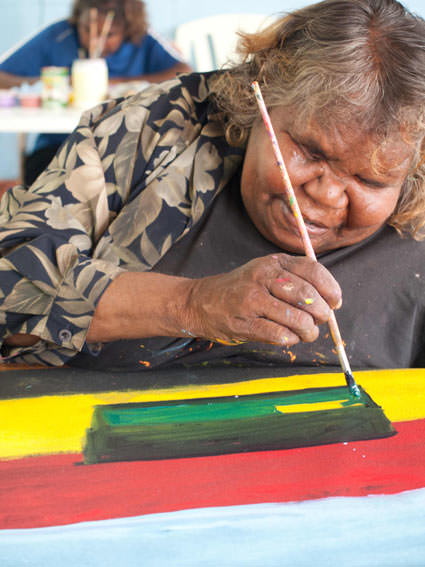
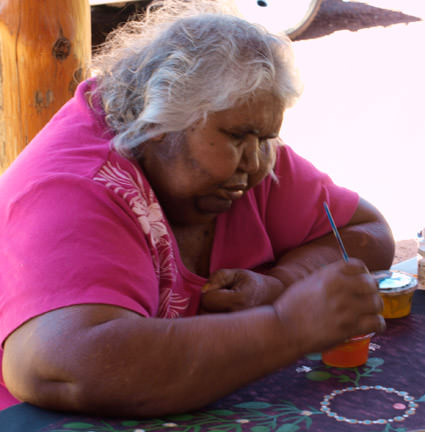
Left: Artist Sally Mulda Right: Artist Jane Young
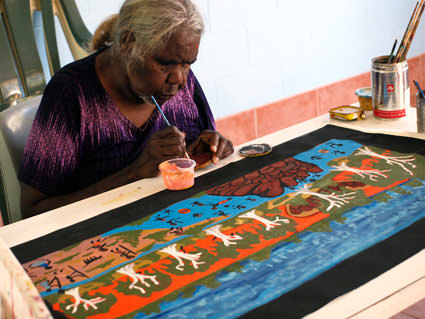
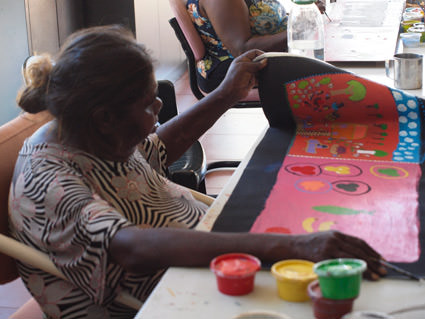
Left: Artist Doris Thomas Right: Artist Eileen Ungwanaka
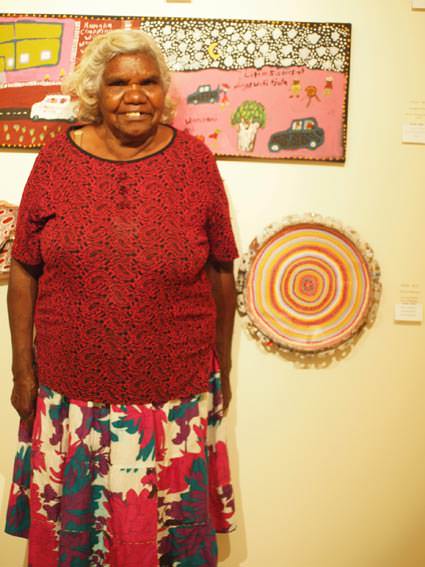
Artist Grace Robinya
What better way to complete this introduction than with the beautiful smiling face of Artist Grace Robinya (above). To see artworks from this community visit the Tangentyere Artists Exhibition at our Rozelle Gallery from 12 - 27 March, 2011 or buy on line. More works will be added during the week before the 12th March, so stay tuned...